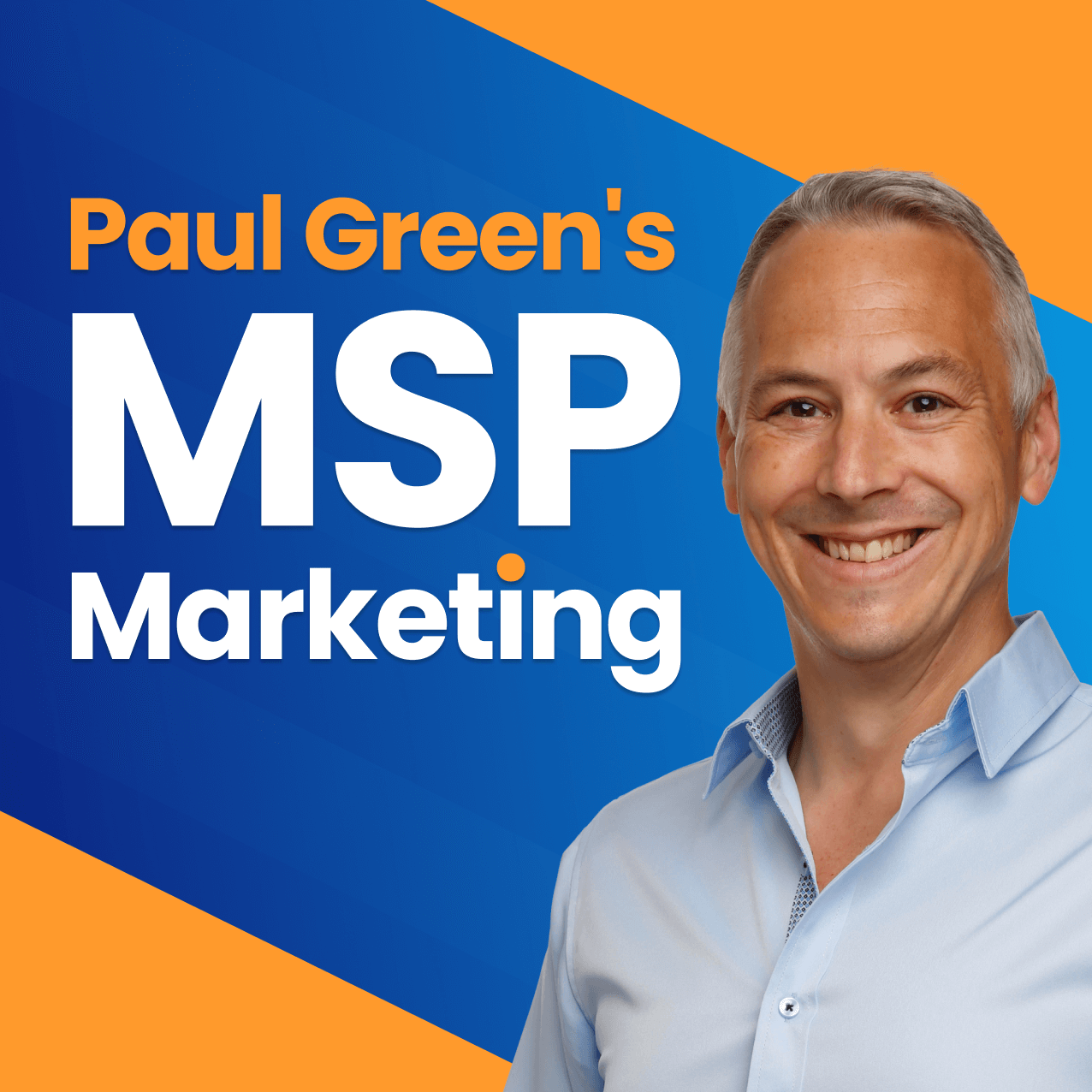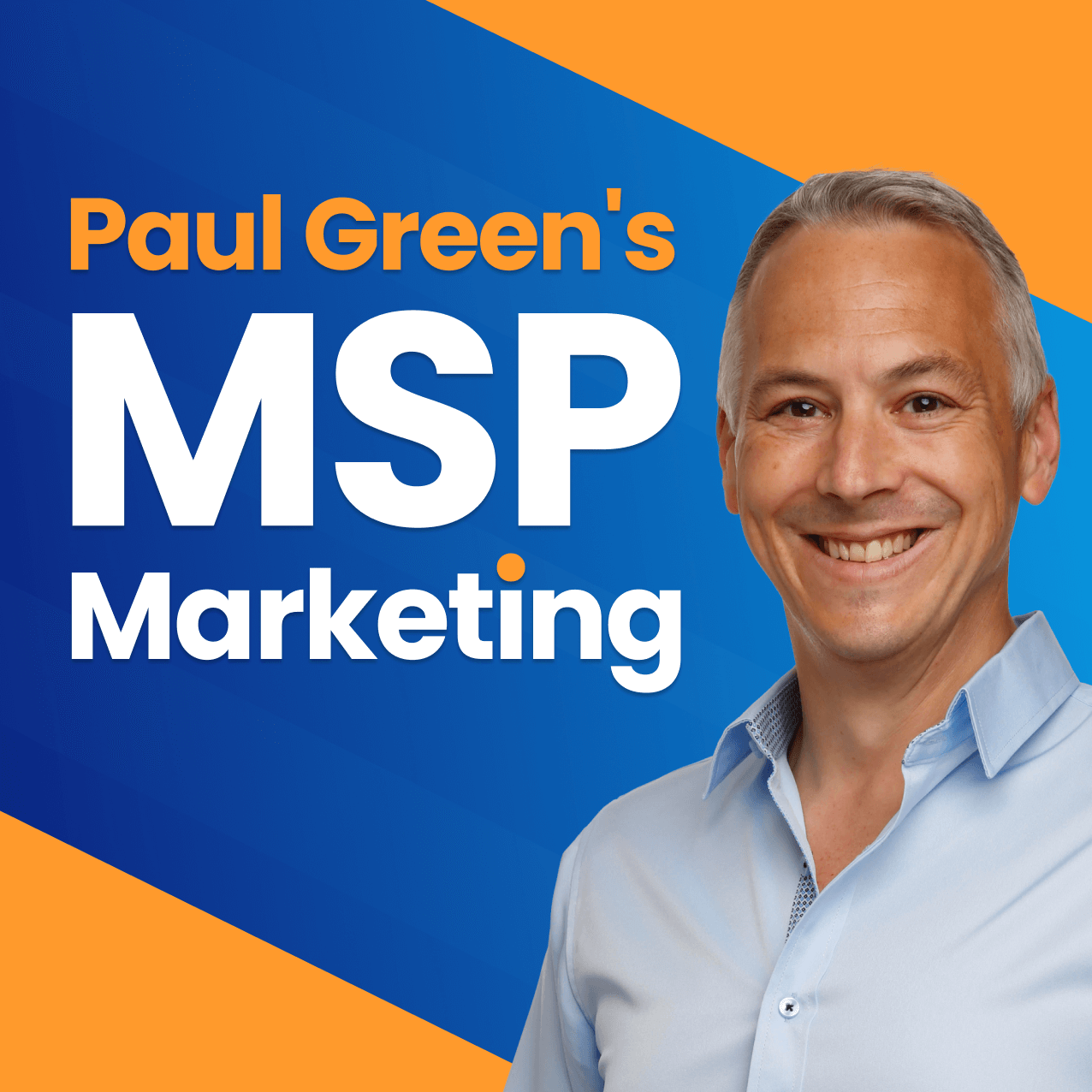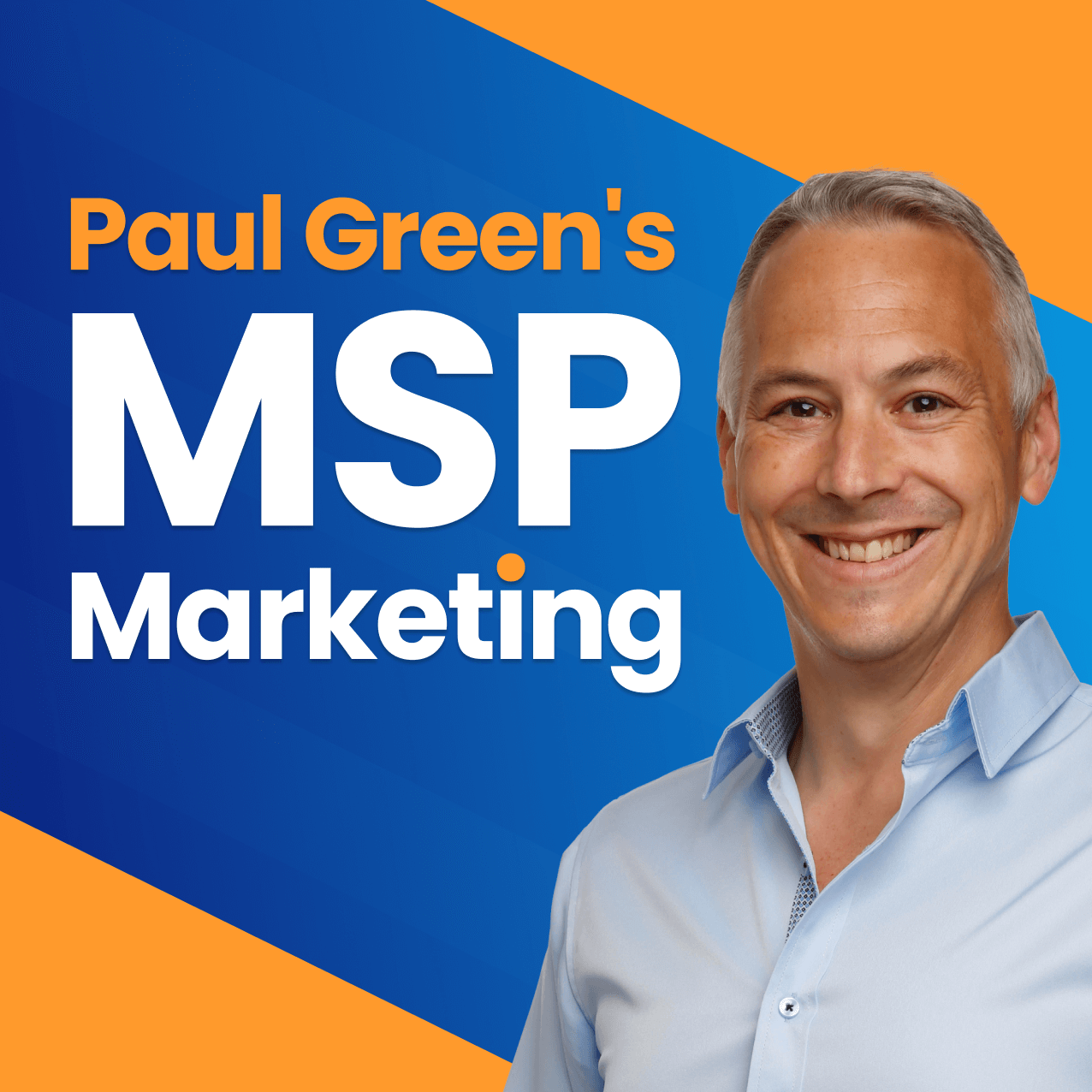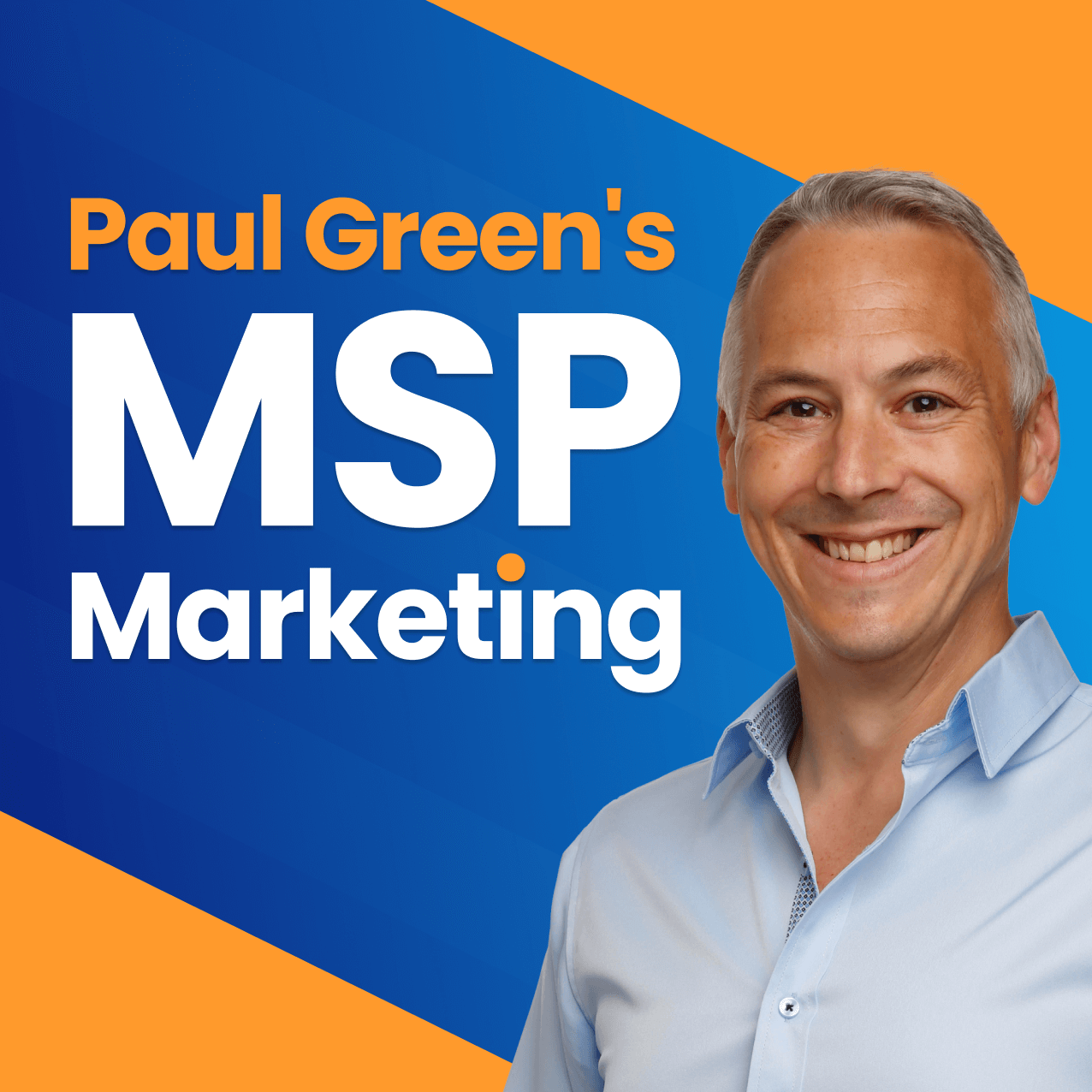Do marketing you can't automate or scale
Description
The podcast powered by the MSP Marketing Edge
Welcome to Episode 309 of the MSP Marketing Podcast with me, Paul Green. This week…
- Do marketing you can’t automate or scale: In the early days of trying out new marketing, you can’t always jump straight to automation. Manual testing helps to figure out what marketing actually works for your MSP.
- MSPs: Imagine losing 17,000 connections on LinkedIn overnight: You don’t own your connections, your content or your interactions on LinkedIn… they belong to LinkedIn, you just get to borrow them. MSPs should have a combination of borrowed and owed audiences.
- The simple video every MSP needs to increase sales: Explainer videos are a key marketing tool and my special guest will explain how to create one and how to make sure it’s something your hottest prospects are desperate to watch.
- The Marketing Minute: Don’t miss this quick and easy YouTube marketing tip.
In a world where you can automate almost anything so it can be done at any scale, here’s the strangest advice you are going to hear from me. I believe sometimes you should deliberately do marketing that will never scale up and that you can’t automate, even if that means that you personally have to sit and do a whole chunk of work.
Why would I recommend this? Surely one of my jobs is to make your marketing easier. Well, yes, that’s true once you’ve figured out what marketing works, but doing marketing experiments yourself is an important part of figuring out the specific tactics that’ll work for your MSP.
As business owners, you and I love things that are scalable and repeatable, right? We like processes, automation, efficiency, and yes, that’s where you want to end up with your marketing. But in the early days of trying out a new marketing channel, you can’t always jump straight to automation. And here’s why. Not all marketing works for all businesses. What works brilliantly for the MSP down the road from you might flop for you.
The only way to find out what marketing actually works for your business is to test it manually in a way that doesn’t scale.
For example, let’s say you want to try LinkedIn outreach, and sure, there are tools out there that’ll blast out hundreds of automated messages every week. But if you don’t yet know what message resonates with your ideal prospects, then blasting out hundreds of messages just means you’ll annoy more people faster. Instead, you’re better off writing a handful of personal connection requests every day. Try different approaches, test out different messages and see what kind of response you get. Once you know what works, then you can look at scaling or systemising it.
Here’s another example, follow up emails. You might want to eventually build an automated nurture sequence inside your CRM, but before you do that, it’s worth sending a batch of personal follow-ups to prospects one by one to see which subject lines get opened, which wording gets replies. That kind of stuff. Once you know can then plug those learnings into automation and let software do the heavy lifting. And here’s my key point. Marketing is not a one size fits all game. Every market, every town, every vertical is slightly different. So in the early days of trying something new, you’ve got to be willing to roll up your sleeves and do the kind of marketing that just isn’t scalable.
Let me give you three more practical examples:
Number one – handwritten letters to prospects. Everybody has too much email, but nobody gets lots of nice stuff in the post anymore through the mail. So a short handwritten note to a dream prospect stands out a mile. You can even include your business card or a printed case study and sure, yeah, it takes time, but that personal effort is exactly what makes it memorable.
Number two – personally following up after events. Instead of dumping business cards into a CRM and firing off a generic email, pick 5 to 10 people you met at an event and send each of them a tailored follow-up. Mention what you talked about when you met and link to something useful or suggest a quick call. It’s way more effort than an email blast, and those connections tend to stick.
And number three – LinkedIn voice notes instead of typing. Another thanks for connecting message, send them a 20 to 30 second LinkedIn voice note. It’s personal, it’s surprising, and it shows there’s a real human behind the profile. Of course, you can’t outsource this. You can’t really automate it, and that’s exactly why it works.
I guess the way to think about this is it’s R&D, it’s research and development for your marketing. Once you’ve tested and proven what works for your specific MSP, then you can start building processes, automations and systems around it. So don’t be afraid of doing scrappy unscalable marketing in the short term. That’s where the insights come from. It’s how you figure out what works. And once you know what works, then and only then do you scale it up and automate it.
MSPs: Imagine losing 17,000 connections on LinkedIn overnight
MSPs, imagine if you logged onto your LinkedIn one day and instead of those thousands of connections that you’ve slowly built the hard way, you see an error message because you’d broken some rule on LinkedIn that you didn’t even know about, and some algorithm somewhere decided to shut down your account. No warning, no opportunity to put it right, you’re just locked out.
Now, this might sound like fantasy, but it’s real and it’s happened to people that you probably know. Let me tell you about borrowed audiences on platforms like LinkedIn and why owned audiences are always a safer bet.
If you’re old enough to have gone to the movies back in the 1990s, do you remember what the trailers were like? All movie trailers back then were kind of the same. There was a voiceover guy with a really deep voice and he’d talk about the main character, usually Bruce Willis, being the wrong man in the wrong place at the wrong time. Well, that was my friend and channel legend, Matt Solomon, on Christmas Eve last year, 2024. I was flicking through Facebook, eating a mince pie actually, when I spotted this post. It said, and this was Matt talking: I’m reaching out with an important request. Remember, he put this on Facebook. He said, my LinkedIn account has been restricted for a post violation. And despite exhausting all standard protocols, 15 emails back and forth, I’ve only encountered copy/paste responses that lead nowhere.
Now, as the voiceover guy would say, Matt was an innocent man locked in a prison for a crime he did not commit. I mean, actually, really, what a nightmare. At the time, Matt had 17,000 plus connections on LinkedIn, and it looks like something that he’d posted had inadvertently tripped a safety algorithm somewhere. His account was automatically suspended. And what’s scary is this could happen to any of us. It could happen to you, it could happen to me at any time. LinkedIn is an amazing platform. I use it every day, and I recommend it as the number one place that MSPs go fishing for business. But its greatest limitation is that it is a borrowed audience.
You don’t own your connections, your content or your interactions on LinkedIn, they belong to LinkedIn.
You just get to borrow them because that benefits you and the platform at the same time. Other borrowed audiences include all other social media platforms, YouTube, online communities that you contribute to, you appearing in someone else’s podcast or in the media or anything like that. The alternative to borrowed audiences is owned audiences. These are safer as you have direct 100% control over what happens with them.
Examples include your email list, visitors to your website, subscribers to your podcast, the list of people who visited your trade show booth. The downside of owned audiences is that it takes a lot more work and cash to build them and get something from them. LinkedIn can make a post go viral with no work needed from you, but your podcast won’t go viral unless you push it and push it and push it for years.
I believe you need a blend of both kinds of audiences. And in fact, Matt Solomon does this. He has a lot of followers across social media, but also has a huge email subscriber list. In the unlikely event his CRM declined to send his emails tomorrow, well, that data is his and he can take it to an alternative CRM. I recommend to my MSP Marketing Edge members that they turn LinkedIn connections into data in their CRM, and we give them a checklist to do this and some specific messages to send out. This allows them to reach the same people through two different channels, but also gives them a safety barrier.
So tell me, what’s the situation in your MSP? If you lost your borrowed audiences tomorrow, could you still reach your leads and prospects? Oh, and PS Just like a 1990 Bruce Willis movie, Matt’s story does have a happy ending. He posted a few days later on Facebook that it had all been resolved and he was no longer in LinkedIn jail.
The simple video every MSP needs to increase sales
Featured guest: Wil Seabrook has spent the last 17 years founding two multi-million dollar creative agencies, winning numerous industry awards and making the Inc 5000 list of fastest growing companies six times.
He was a pioneer in the o









